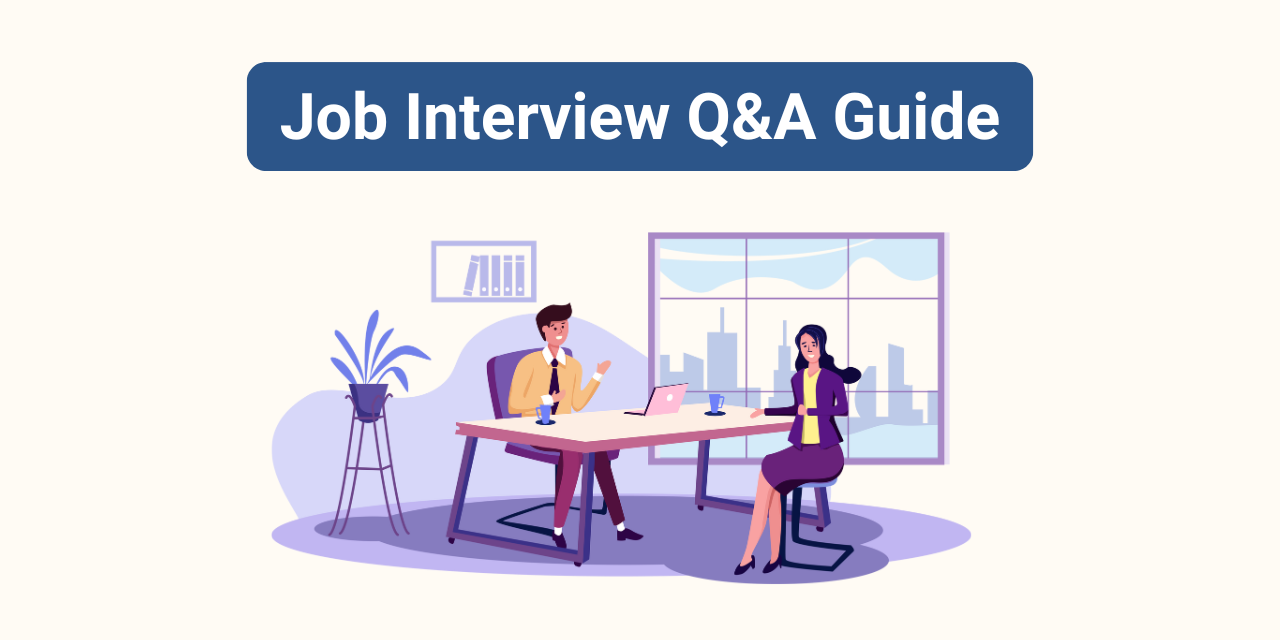Knowing how to write a cover letter is important.
65.3% of employers think it's essential when hiring, especially for higher-level positions.
Cover letters can help you stand out by providing an opportunity to highlight your personality, skills and interest in the role.
In this article, we will explain what a cover letter is, how to write an effective one and offer examples to serve as guides.
What Is a Cover Letter?
A cover letter is a one-page document you send with your Curriculum Vitae (CV) when applying for a job. It lets you show you're a good fit for the job by explaining how your skills match what the company needs.
Steps To Take Before Writing Your Cover Letter
Writing a cover letter can feel overwhelming for several reasons. One key challenge is sharing your experiences in a concise and compelling manner.
But with proper preparation, you can overcome this and articulate your experiences briefly and engagingly.
To assist you in this process, here are steps to ease the cover letter writing experience and ensure your document grabs the attention of hiring managers.
Step 1: Reflect on Your Experiences
When you take the time to consider your past experiences, you can pinpoint key achievements, skills and contributions that align with the requirements of the position you're applying for.
This reflection enables you to craft a focused narrative to capture the employer's attention.
Step 2: Research the Company
Companies often have unique cultures that influence their work environment and team dynamics.
By researching the company's culture, you can showcase how your working style and personality align with theirs.
This emphasis on cultural fit can be a huge factor for employers seeking candidates who can blend well into their teams.
One way to research a company is by using social media platforms.
According to a survey, LinkedIn stands out as the top choice for exploring potential employers.
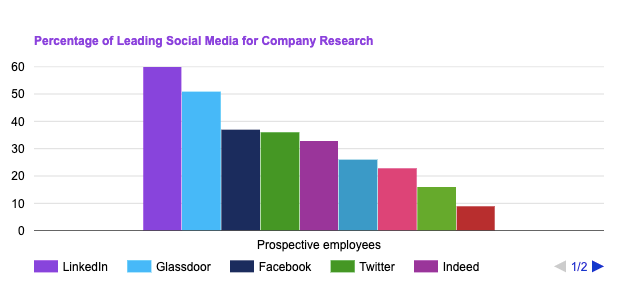
Step 3: Clarify Your Motivation
Consider why you are interested in the position and the company. What specific aspects appeal to you?
Clarifying your motivation helps you show genuine interest in the role and the company.
Being sincere shows the employer that you're committed to the specific job and not just looking for any job.
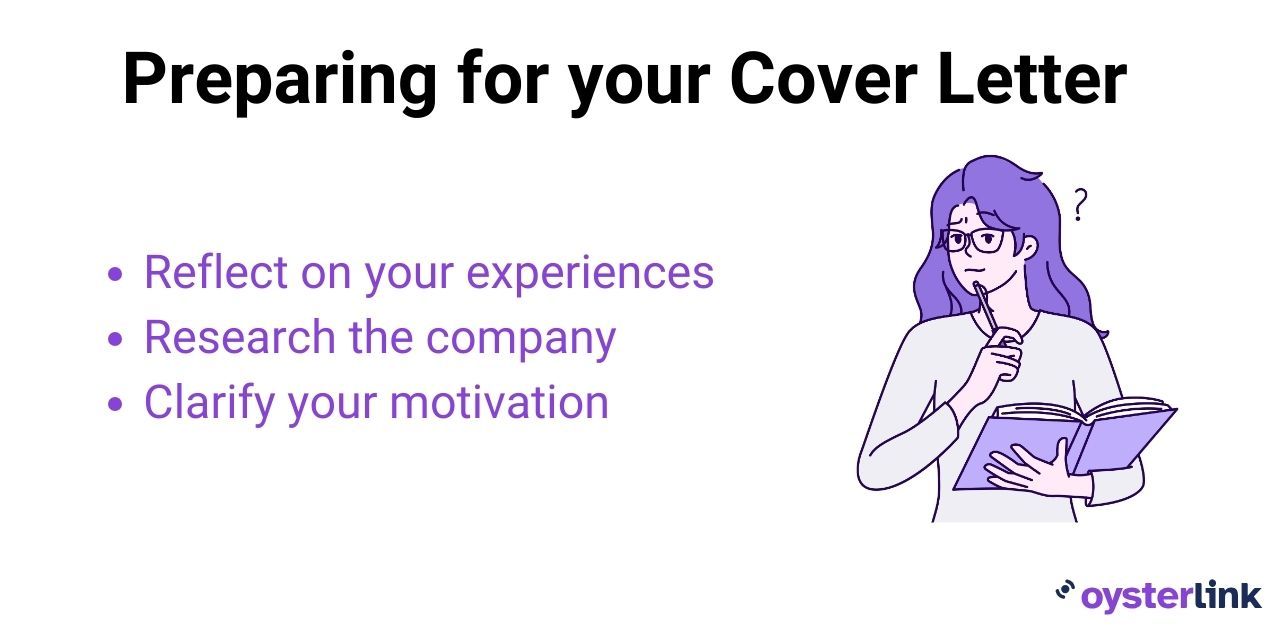
What To Include in a Cover Letter?
A well-written cover letter includes essential elements such as contact information in the header, a proper greeting, an engaging introduction, paragraphs highlighting your skills and a strong conclusion or closing statement.
Below, we’ll discuss each element.
Contact Info in the Header
Start your cover letter by adding your contact details such as your full name, phone number and professional email address in the header.
Avoid using informal email addresses such as [email protected], as they come across as unprofessional.
This section is important as it allows potential employers to reach out to you easily.
A Greeting for the Hiring Managers
Guffey and Loewy’s acclaimed business communication book titled Essentials of Business Communication states that an effective cover letter begins with a formal greeting that addresses the hiring manager by name.
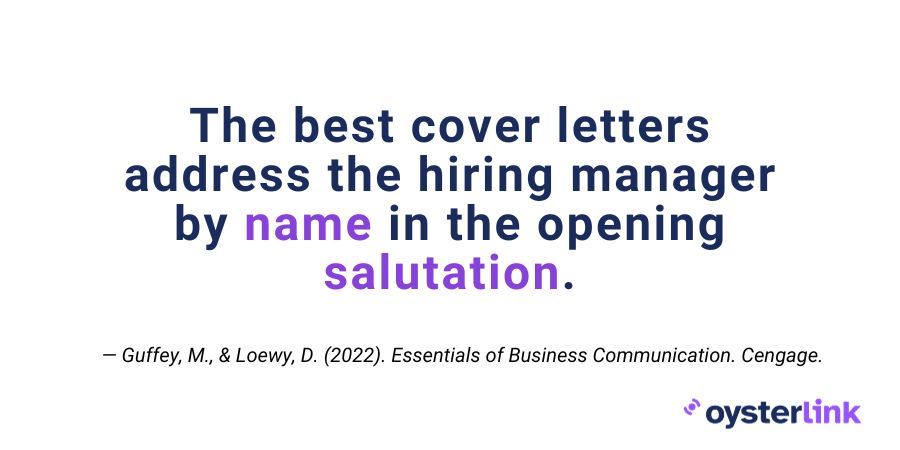
Using the name of the hiring manager shows professionalism and attention to detail.
If the job posting didn't include the manager's name, contact the company and ask to whom you should address your application.
An Introduction
The first paragraph should convey enthusiasm, specify the job you're applying for and mention how you learned about it.
Recruiters can see your name at the top and bottom of the page so avoid common phrases such as “My name is.”
If someone in the company refers you, it's important to mention their name. Employers trust the judgment of their current employees.
Research shows that applicants significantly increase their chances of getting the job, over 13 times, through an employee referral compared to applying through a job board.
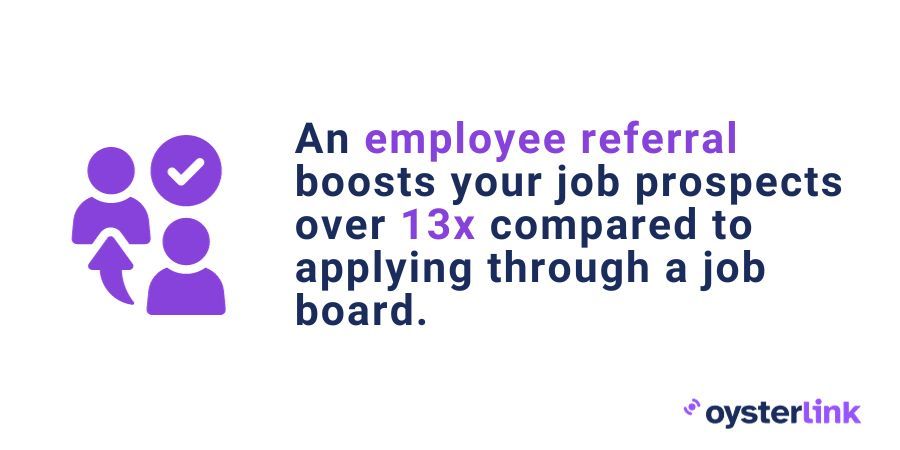
Body: Paragraphs Showcasing Your Skills
Showcase how you'll actively contribute to the company's business goals.
For example, you could say: "Utilizing my project management expertise, I'll optimize workflows, ensure timely project delivery and contribute to the company’s goal of operational excellence.”
Use specific examples from your professional experience, focusing on measurable impacts you've made.
Incorporate keywords from the job description to improve your chances of passing through Applicant Tracking Systems (ATS).
Conclusion: Strong Closing Statement
In the closing paragraph, clearly express your intention to further discuss how your qualifications align with the company's needs.
Extend your gratitude to the hiring manager for taking the time to review your application.
Conclude with a professional signoff, such as "Sincerely," followed by your name.
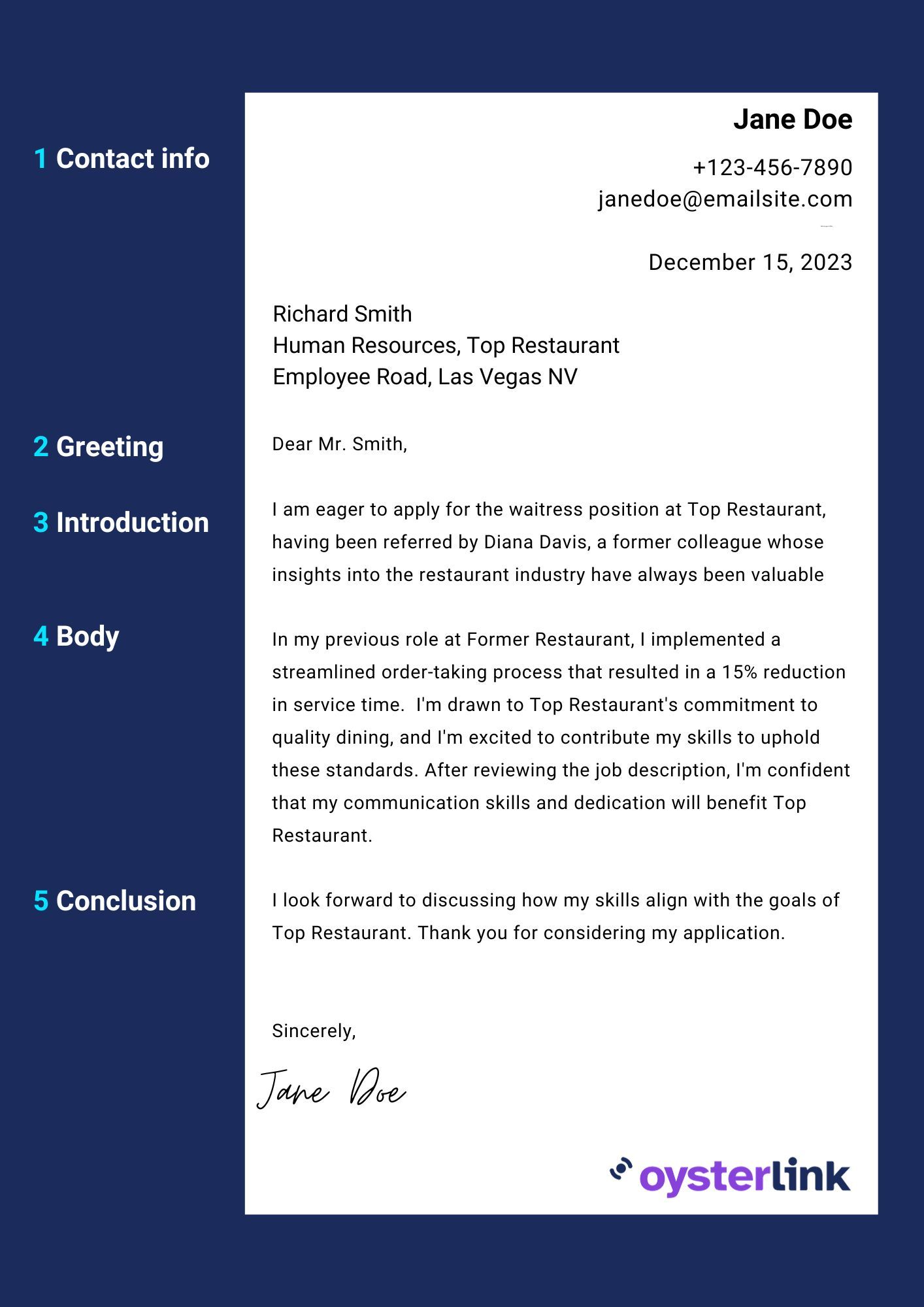
7 Tips for Creating an Outstanding Cover Letter
Here are bonus tips to help you create a cover letter that stands out and effectively communicates your qualifications and enthusiasm for the position.
Proofread Thoroughly
76% of HR professionals would automatically reject a cover letter with typos or spelling mistakes.
So, before sending your cover letter, use tools like Grammarly to proofread it.
Otherwise, you risk your application being dismissed without the hiring manager reviewing your CV.
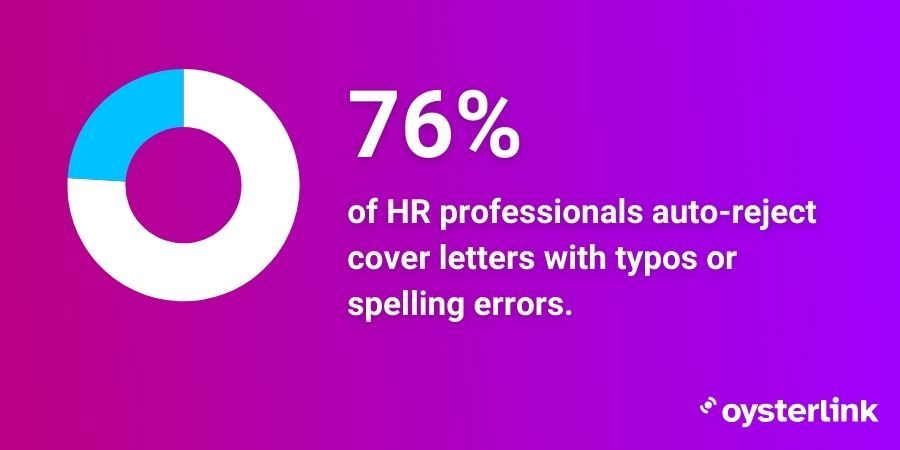
Alternatively, you can ask friends or colleagues for feedback to make sure your letter is clear and organized.
Prioritize Employer Needs
Shift your focus from your own job search needs to what the employer requires in a candidate. Clearly demonstrate how your skills and attributes align with the employer's needs.
For instance, instead of stating, “I have strong communication skills and attention to detail, which I believe make me a great fit for this role,” express it as follows:
“My proficiency in effective communication and meticulous attention to detail directly align with the specific requirements of this position. I will contribute to the team's success by delivering clear and precise communication while maintaining high accuracy in all tasks.”
Beware of Clichés
Clichés dilute the impact of your message. With limited space, every word must serve a specific purpose and contribute meaningfully to your narrative.
Some of the most common clichés in cover letters include “hardworking”, “go-getter” and “proactive”.
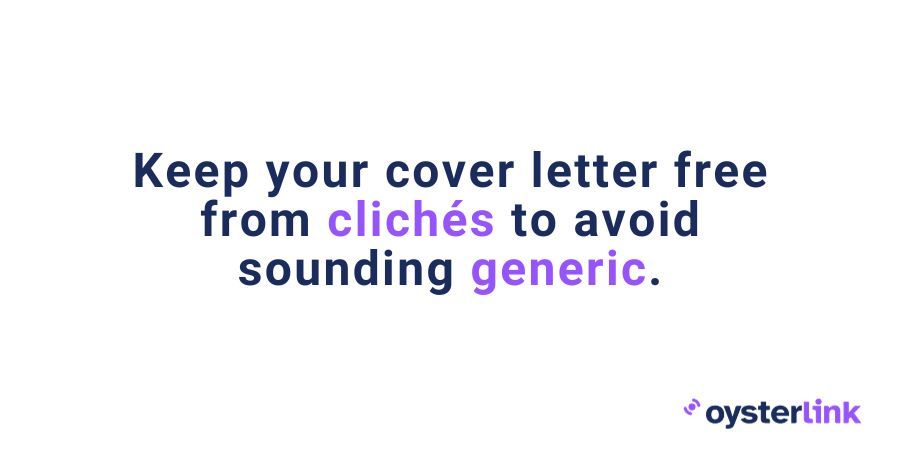
Highlight Your Achievements Using Numbers
Use numbers and percentages to showcase your achievements.
Examine the difference between the examples below:
Using numbers to highlight your achievement:
"In my previous role, I implemented cost-saving measures that led to a 15% reduction in operational expenses, resulting in significant financial gains for the company.
Generic mention of achievement:
"I successfully identified and implemented strategic initiatives that significantly reduced operational costs, contributing to overall financial improvements for the organization."
Using numbers to highlight achievements provides a concrete and measurable dimension to your accomplishments. It allows employers to grasp the impact of your contributions more easily.
Use Action Verbs
Action verbs convey a sense of proactivity and initiative. They contribute to a lively and energetic tone, unlike passive verbs.
For instance, rather than stating, 'Responsible for managing the project,' you can use 'Led the project management team.'
This choice brings your role to life, clearly indicating that you took charge, guided the project management team and played a significant role in the successful execution of the project.
Match the Tone
Mirror the language and tone of the job description to resonate with the employer.
If the job description is formal, your language should be too. If it's more relaxed and casual, you can be a bit more laid-back in your writing. It's about blending in and making sure your words feel like they belong in the same conversation.
So, when you read the job description, pay attention to how they talk about the company and the role and then try to speak their language when you write your cover letter.
This helps you connect better with the employer and shows that you understand their style.
Follow Directions
Pay close attention to the cover letter instructions. If the job advertisement requires you to submit your cover letter in a specific file format, be sure to follow it.
Adhere to the recommended length of the cover letter and any other formatting guidelines, such as font, spacing and margins.
This shows the employer that you have carefully read the job description and are genuinely interested in aligning yourself with their expectations.
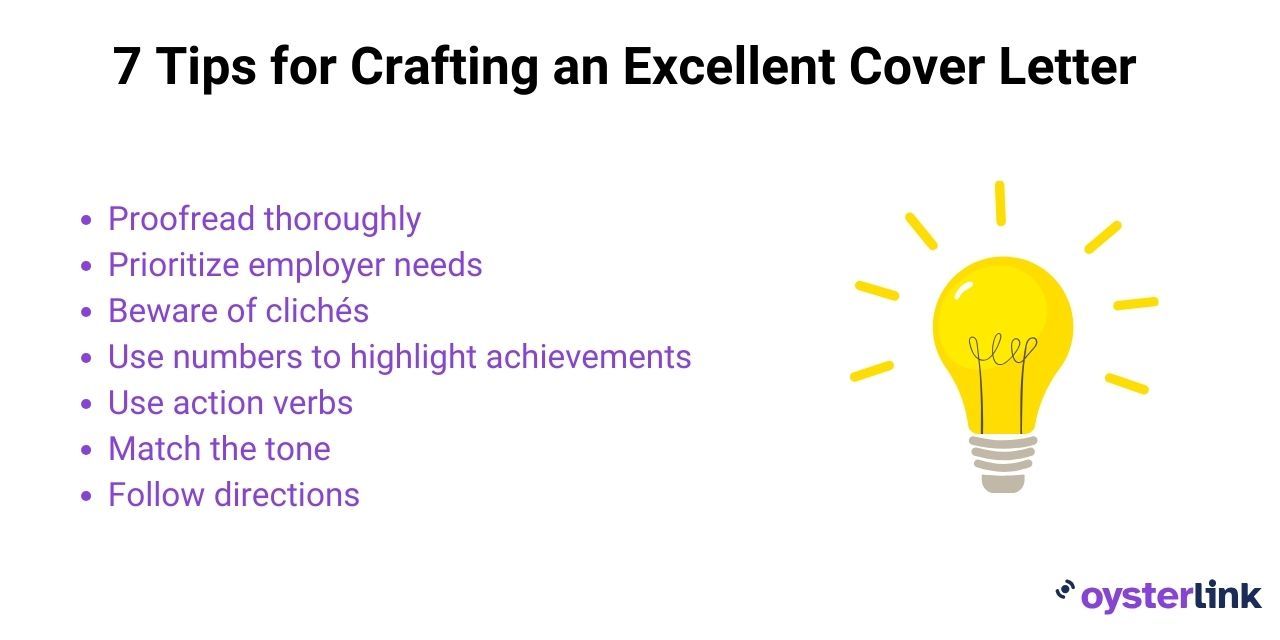
Cover Letter Examples
Explore these cover letter examples that exemplify effective communication, tailored content and professionalism.
Observe how keywords from the job descriptions are strategically integrated.
Job Ad Example 1: QA Engineer
Job Overview:
We are looking for a Quality Assurance Engineer. Your responsibilities include performing exploratory and automated tests to maintain our product quality. We want proactive people who can find and fix system issues in software development.
Duties & Responsibilities:
- Oversee and contribute to the overall quality planning strategy
- Ensure end-to-end testing before software delivery within an agile environment
- Develop and implement standards and procedures to guide developers in their work
Experience Requirements & Skills:
- Proven work experience in software development and quality assurance
- Expertise in UI testing, automated testing and test driven development strategies
- Proficiency in coding using JAVA, HTML5, DB2 and XML
Education & Qualifications:
- Bachelor’s degree in Computer Science, Engineering or a related field; a Master’s degree is a plus
Cover Letter:
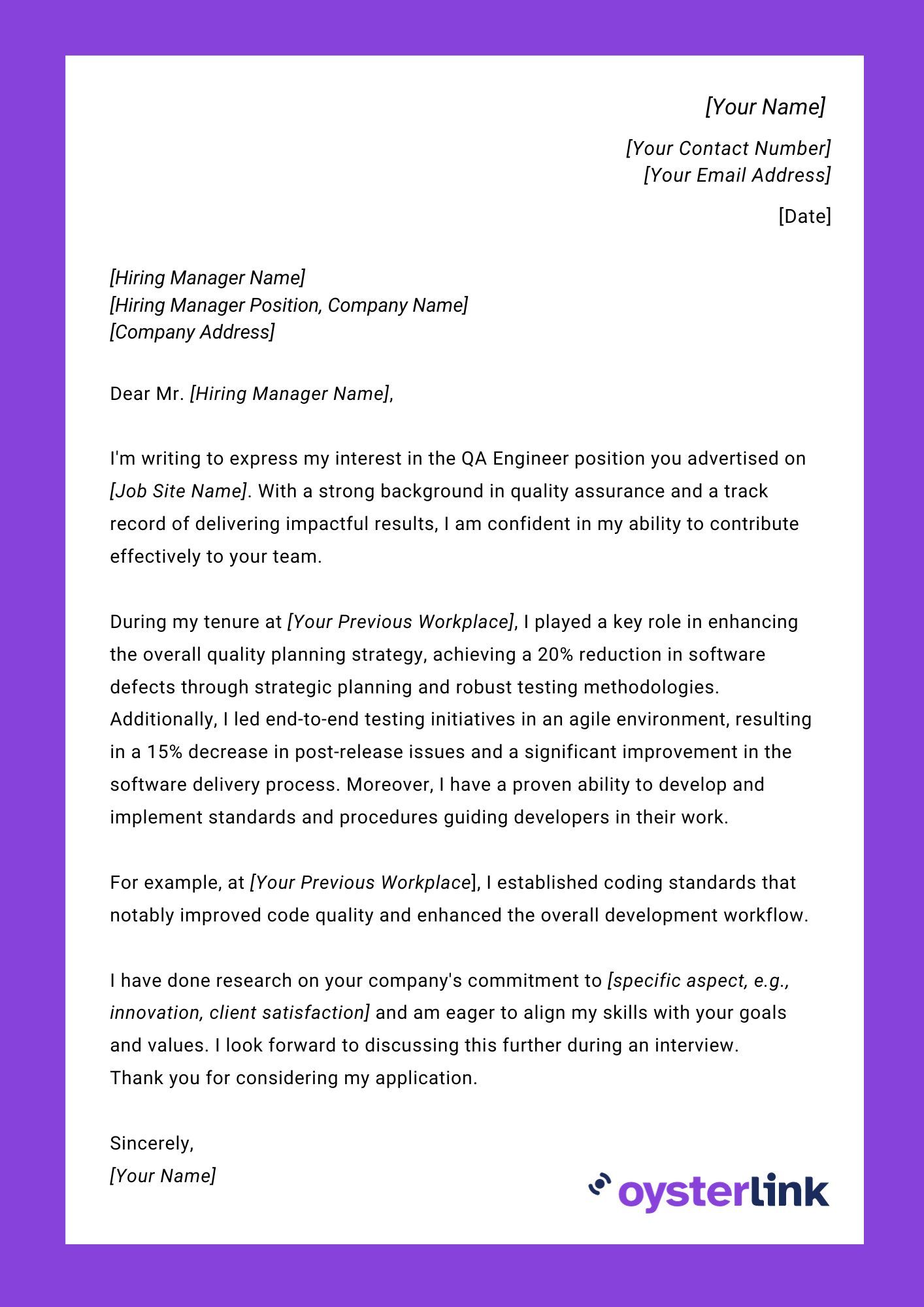
Improve your job application strategy by downloading our free QA Engineer Cover Letter Template.
Job Ad Example 2: Shift Supervisor
Job Overview:
Join us as a Shift Supervisor. Manage staff schedules, assign tasks and ensure timely completion according to company standards. Apply now if you have discipline, leadership qualities and commitment to our organization.
Duties & Responsibilities:
- Oversee and manage daily task
- Foster a positive and collaborative work environment
- Implement and enforce company policies and procedures, ensuring staff compliance
- Train and onboard new employees, ensuring they understand their roles and responsibilities
- Conduct periodic performance evaluations to enhance team productivity and maintain optimal operations
Experience Requirements & Skills:
- Minimum of 2 years of experience as a Shift Supervisor or similar role
- Demonstrated ability to manage and lead a team effectively in a fast-paced environment
- Excellent problem-solving abilities, addressing issues efficiently to ensure smooth operations
- Capability to conduct performance evaluations and provide constructive feedback
Education & Qualifications:
- High school diploma or equivalent
- Preferred: Bachelor’s degree in Business Management, Human Resources or a related field
Cover Letter:
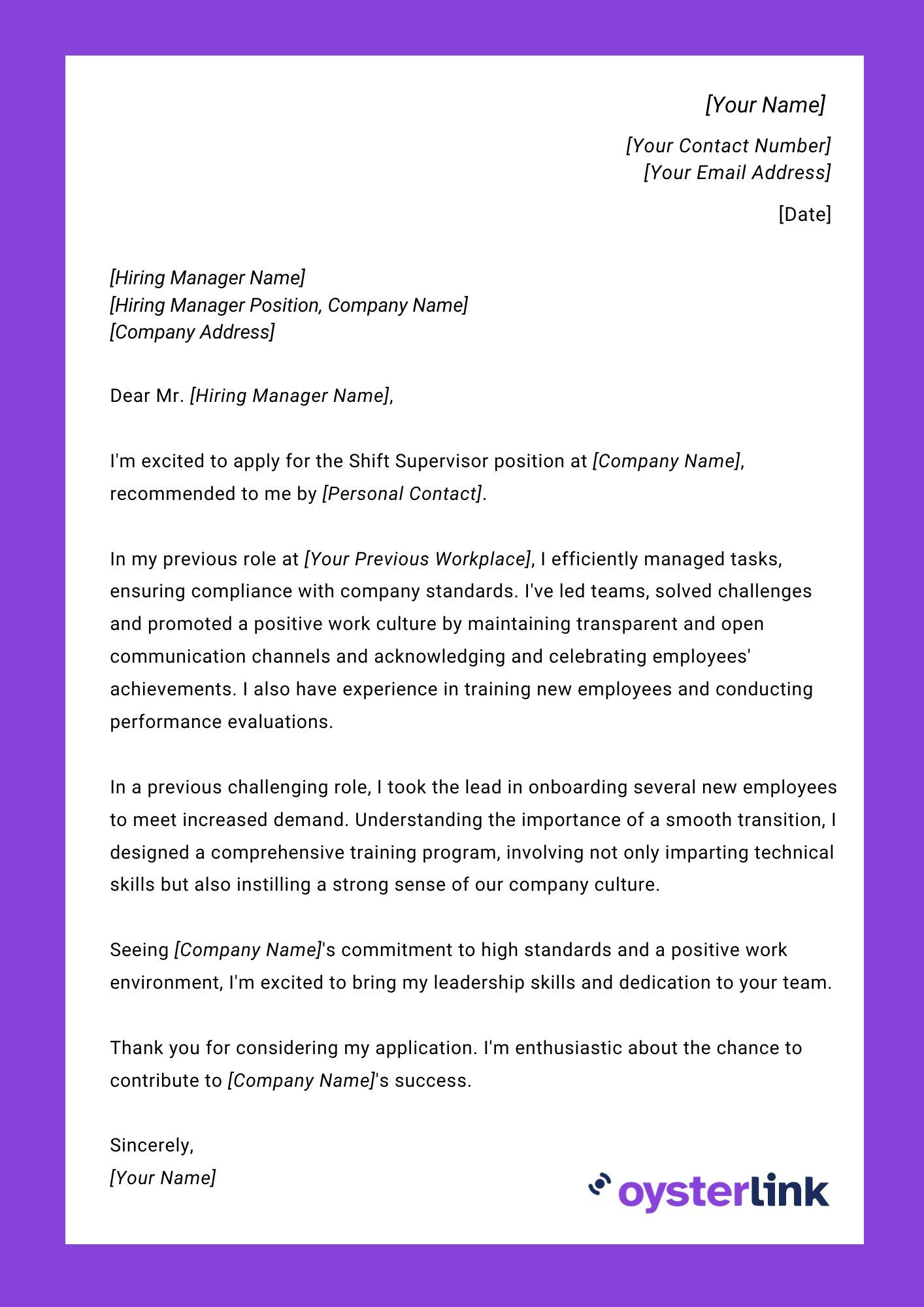
Example 3: Data Analyst
Job Overview:
Join us as a Data Analyst to shape and optimize our data analytics. Work with different teams for seamless interpretation and maintenance of data sets. Use your expertise to plan and deploy data analysis processes, tools and techniques. Apply now if you're good at problem-solving and dedicated to optimizing data performance.
Duties & Responsibilities:
- Collect, clean and analyze large datasets to extract meaningful insights
- Collaborate with cross-functional teams to understand data requirements and business objectives
- Utilize statistical methods and data visualization tools
- Develop and implement data collection systems and strategies
Experience Requirements & Skills:
- Proven experience as a Data Analyst
- Demonstrated proficiency in data analysis techniques and statistical methods
- Ability to work collaboratively in cross-functional teams
Education & Qualification Requirements:
- Preferred: Bachelor’s degree in Data Sciences, Statistics or a related field
Cover Letter:
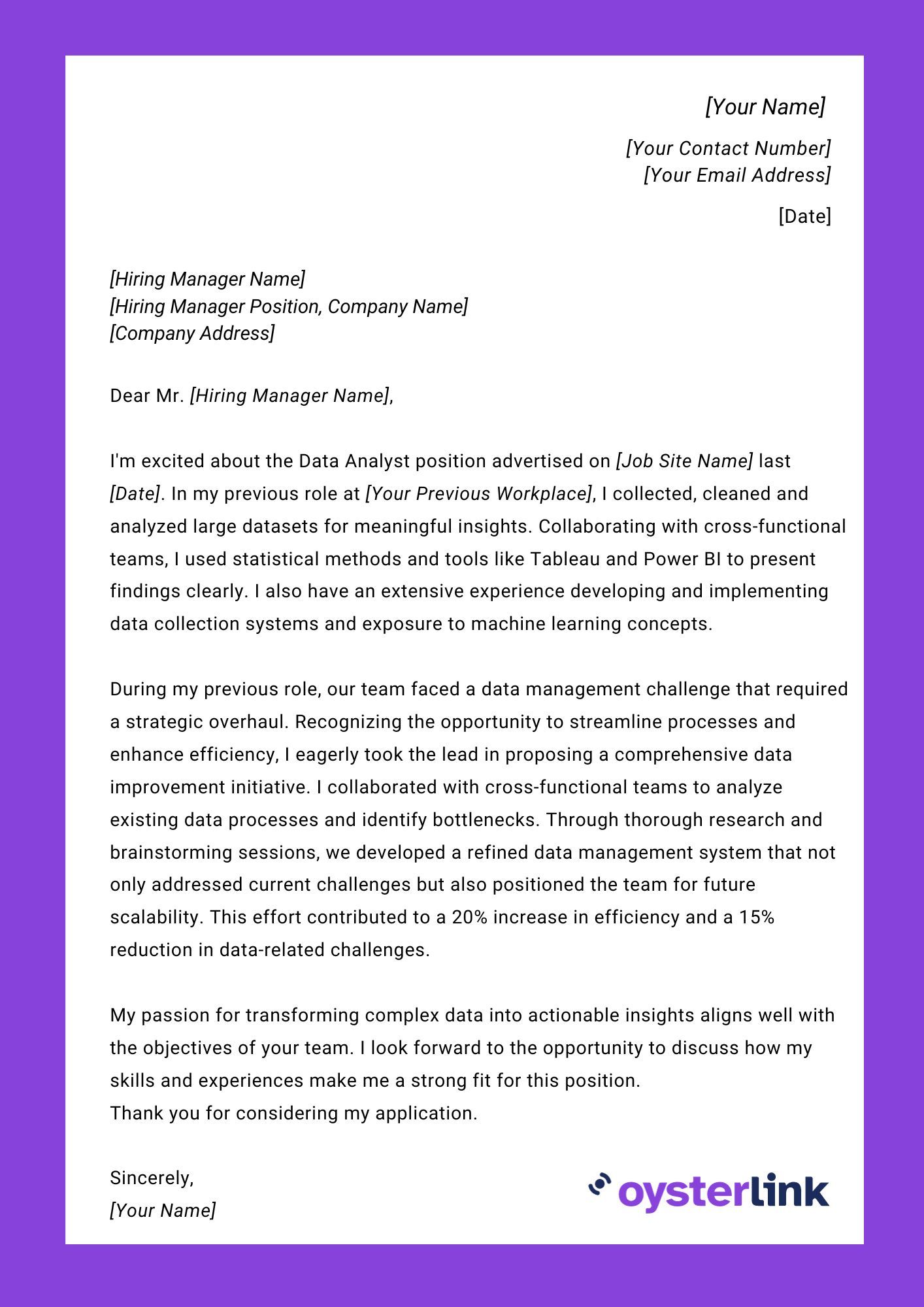
Stand out from the crowd with our free Data Analyst Cover Letter Template - available for download.
Examples of Bad Cover Letters
Let's explore examples of less-than-ideal cover letters, highlighting common mistakes to avoid when writing a cover letter.
Example 1:
Dear Hiring Manager,
I am a hard worker, quick learner and always give my best effort, making me a great fit for your team.
Attached is my resume for your review. Looking forward to the opportunity to discuss my application further.
Sincerely,
[Your Name]
Why it’s not effective:
The use of vague phrases such as 'hard worker,' 'quick learner,' and 'give my best effort' does not effectively convey the candidate’s qualifications. Additionally, this example lacks specific details about the company the candidate is applying to. The closing statement is also rather abrupt and generic.
Example 2:
Hey,
Hope this email finds you well! Just wanted to drop a line about the [Job Title] position. I saw it on your site and thought, "Hey, I could totally rock that job!"
Your company seems cool, and I'm all about that life. I did some stalking on your website. It looks like you guys know how to have a good time while still getting stuff done. That's my jam.
Anyway, hit me back if you're into my vibe. Let’s chat about how I can bring my A-game to your squad.
Cheers,
[Your Name]
Why it’s not effective:
While expressing enthusiasm is good, the level of informality in phrases like "I did some stalking" and "That's my jam" might be perceived as unprofessional. It's important to use professional language to make a positive impression.
In addition, this example also lacks information about the candidate's qualifications, skills or experiences.
Example 3:
Dear Hiring Manager,
I'm applying for the [Job Title] position at your company.
At my previous company, I faced challenges due to poor management and lack of support. This taught me the value of finding a workplace that values its employees.
My previous employer had a toxic environment, and I'm seeking a change. I believe your company aligns more with my values. I hope to find a healthier and more supportive work culture here.
Thank you for considering my application.
Sincerely,
[Your Name]
Why it’s not effective:
This example criticizes the candidate's past employer. While it's understandable that you are seeking a positive change, expressing dissatisfaction with a previous employer in a cover letter may not create the best impression.
It's generally better to focus on the positive aspects of what you are seeking in the new position rather than dwelling on negative experiences.
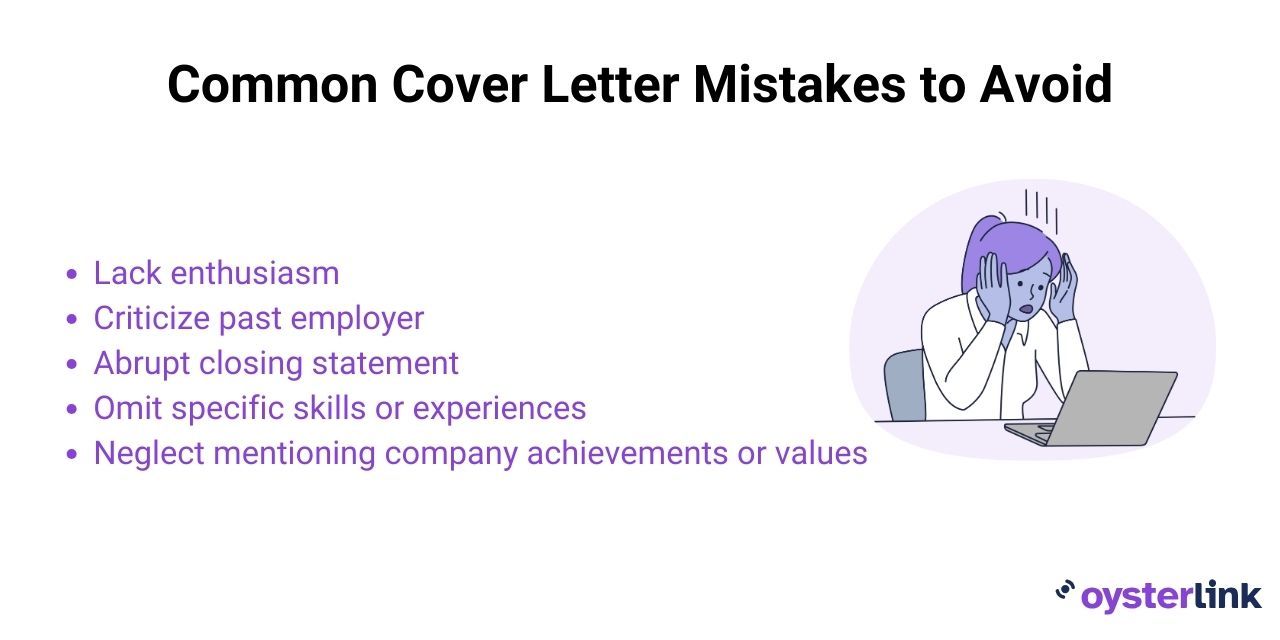
Writing an effective cover letter is a crucial step in presenting yourself as the ideal candidate to potential employers.
By focusing on clarity, conciseness and personalization, you can make a lasting impression that sets you apart from the competition.
Subscribe to OysterLink for the Latest Insights and Industry Trends
Explore the Spotlight section on OysterLink for additional job application insights and tips.
We also offer interview questions and sample answers designed to assist you in preparing for a job interview. These resources provide insights on questions to avoid posing to employers and offer guidance on effectively answering the most common interview questions.


